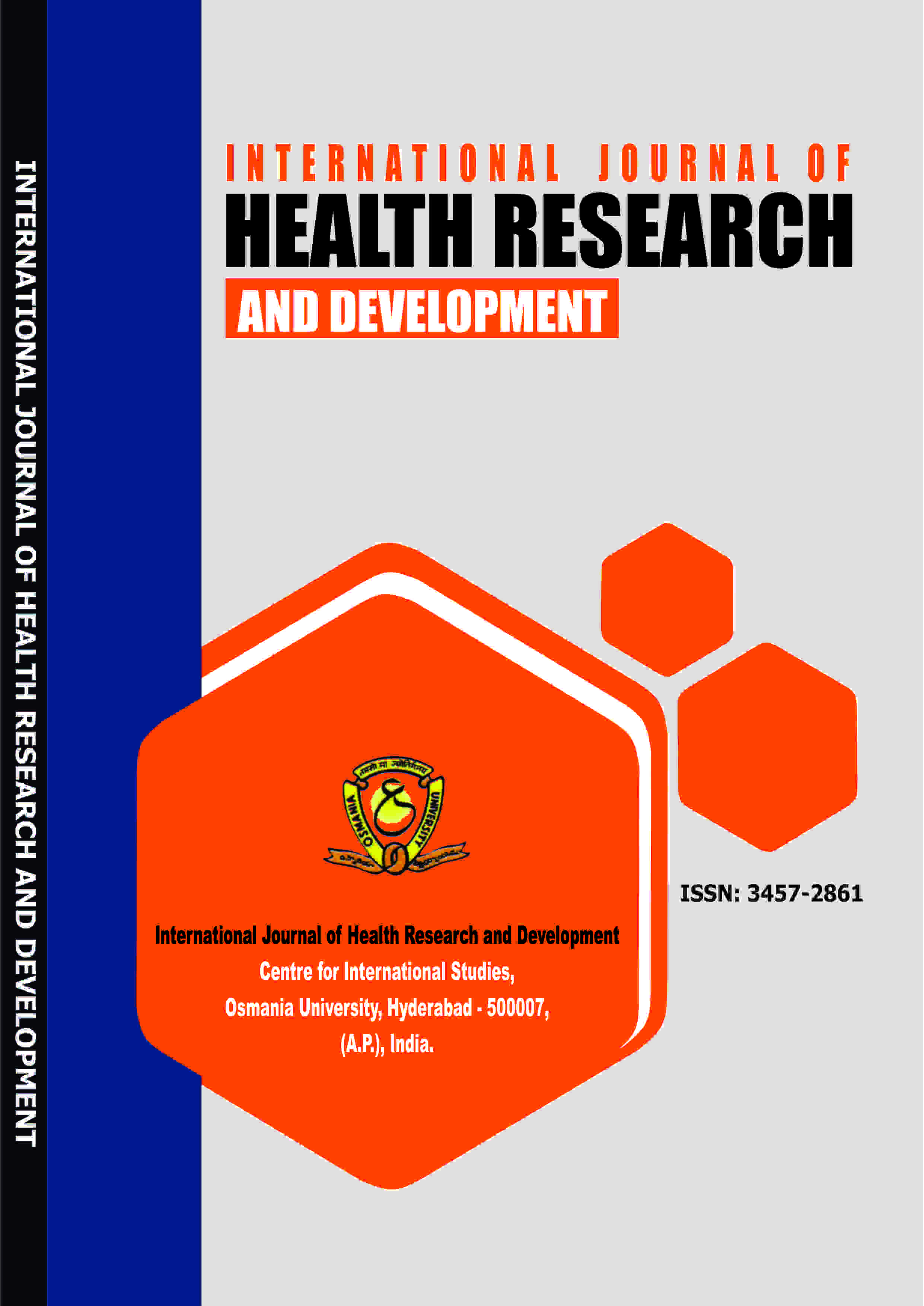INTERNATIONAL JOURNAL OF HEALTH RESEARCH AND DEVELOPMENT (IJHRD)
EFFECTS OF CAPTOPRIL AND LOSARTAN ON CARDIAC STEREOLOGY IN RATS WITH RENOVASCULAR HYPERTENSION
E-ISSN: 7883-6773
P-ISSN: 3457-2861
DOI: https://iigdpublishers.com/article/101
Captopril, an angiotensin-converting enzyme inhibitor, and losartan, an angiotensin II receptor blocker, are used for the treatment of hypertension, but their effects on cardiac stereology are unknown. This study, therefore, aimed to examine their effects on cardiac stereology in rats with renovascular hypertension. This study was conducted at Histomorphometry and Stereology Research Centre, and Cardiovascular Pharmacology Research Lab, Department of Pharmacology, School of Medicine, Shiraz University of Medical Sciences, Shiraz, Iran, in August 2015 to August 2016. Forty-eight rats were allocated to six groups (n=8 per each group): a sham group, which received a vehicle (distilled water) and five renal artery-clipped groups, which received the vehicle, captopril (50 or 100 mg/ kg/day),
or losartan (25 or 50 mg/kg/day). After four weeks, the animals’ systolic blood pressures (mm Hg) were measured, and the total volumes of their heart, myocardium, endocardium, matrix, and myocardial vessels (mm3), as well as the number of their cardiomyocytes, and Purkinje fibers were determined. Data were
analyzed using one-way analysis of variance (ANOVA) followed by least significant difference (LSD) test. P value of equal to or less than 0.05 was considered significant. The renal artery-clipped rats receiving the vehicle had a significantly higher systolic blood pressure (P<0.001); heart weight (g) (P<0.001); and total volume of the heart (P<0.001), myocardium (P=0.020), endocardium (P=0.009), and myocardial vessels (P=0.008); as well as a significantly lower number
of cardiomyocytes (P=0.010) and Purkinje cells (P=0.005), than did the rats in the sham group. The renal artery-clipped rats receiving captopril or losartan had a significantly lower systolic blood pressure (P<0.001), heart weight (P=0.007), and total volume of the heart (P<0.001), myocardium (P<0.001), endocardium (P=0.027), and myocardial vessels (P=0.004) than did the renal artery-clipped rats receiving the vehicle. Neither captopril nor losartan prevented a reduction in the number of Purkinje cells, but captopril at the higher dose attenuated cardiomyocyte loss (P=0.010). Captopril and losartan lowered the systolic blood pressure and cardiac hypertrophy but failed to prevent Purkinje cell loss. Captopril only at the higher dose prevented cardiomyocyte loss. Captopril exerted a greater inhibitory effect on cardiac stereology, which warrants further research.
Ali Akbar Nekooeian PhD
Islam SM, Mainuddin A, Islam MS, Karim MA, Mou SZ, Arefin S, et al. (2015). Prevalence of risk fac- tors for hypertension: A cross-sectional study in an urban area of Bangladesh. Glob Car- diol Sci Pract.;2015:43. doi: 10.5339/ gcsp.2015.43. PubMed PMID: 26779518; PubMed Central PMCID: PMCPMC4710872.
Lackland DT, Weber MA. (2015). Global burden of cardiovascular disease and stroke: hypertension at the core. Can J Cardiol.;31:569- 71. doi: 10.1016/j.cjca.2015.01.009. PubMed PMID: 25795106.
Fernandes-Santos C, (2006). Mendonça LdS, Mandarim-de-Lacerda CA. Beneficial effects of angiotensin II AT1 blocker on cardiovascular adverse remodeling due to nitric oxide synthesis blockade. Int J Morphol.;24:309-18. doi: 10.4067/ S0717-95022006000400003.
Guo X, Fan C, Tian L, Liu Y, Wang H, Zhao S, et al. (2017). The clinical features, outcomes and genetic characteristics of hypertrophic cardiomyopathy patients with severe right ventricular hypertrophy. PLoS One.;12:e0174118. doi: 10.1371/journal. pone.0174118. PubMed PMID: 28323875; PubMed Central PMCID: PMCPMC5360271.
Rohini A, Agrawal N, Koyani CN, Singh R. (2010). Molecular targets and regulators of cardiac hypertrophy. Pharmacol Res.;61:269- 80. doi: 10.1016/j.phrs.2009.11.012. PubMed PMID: 19969085.
